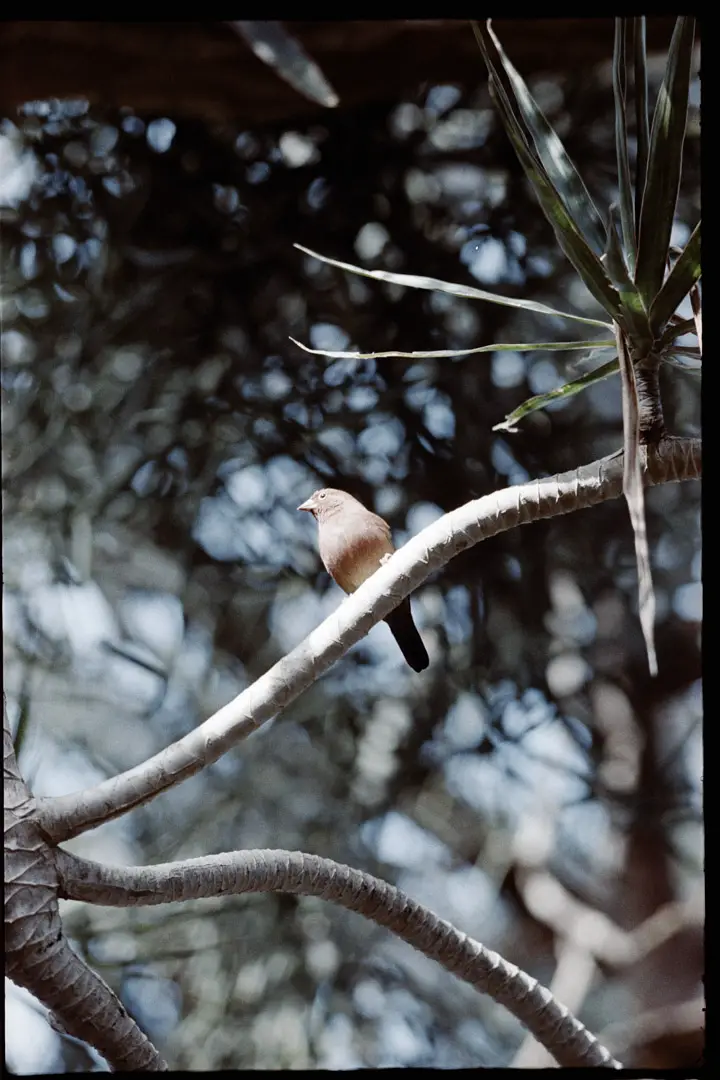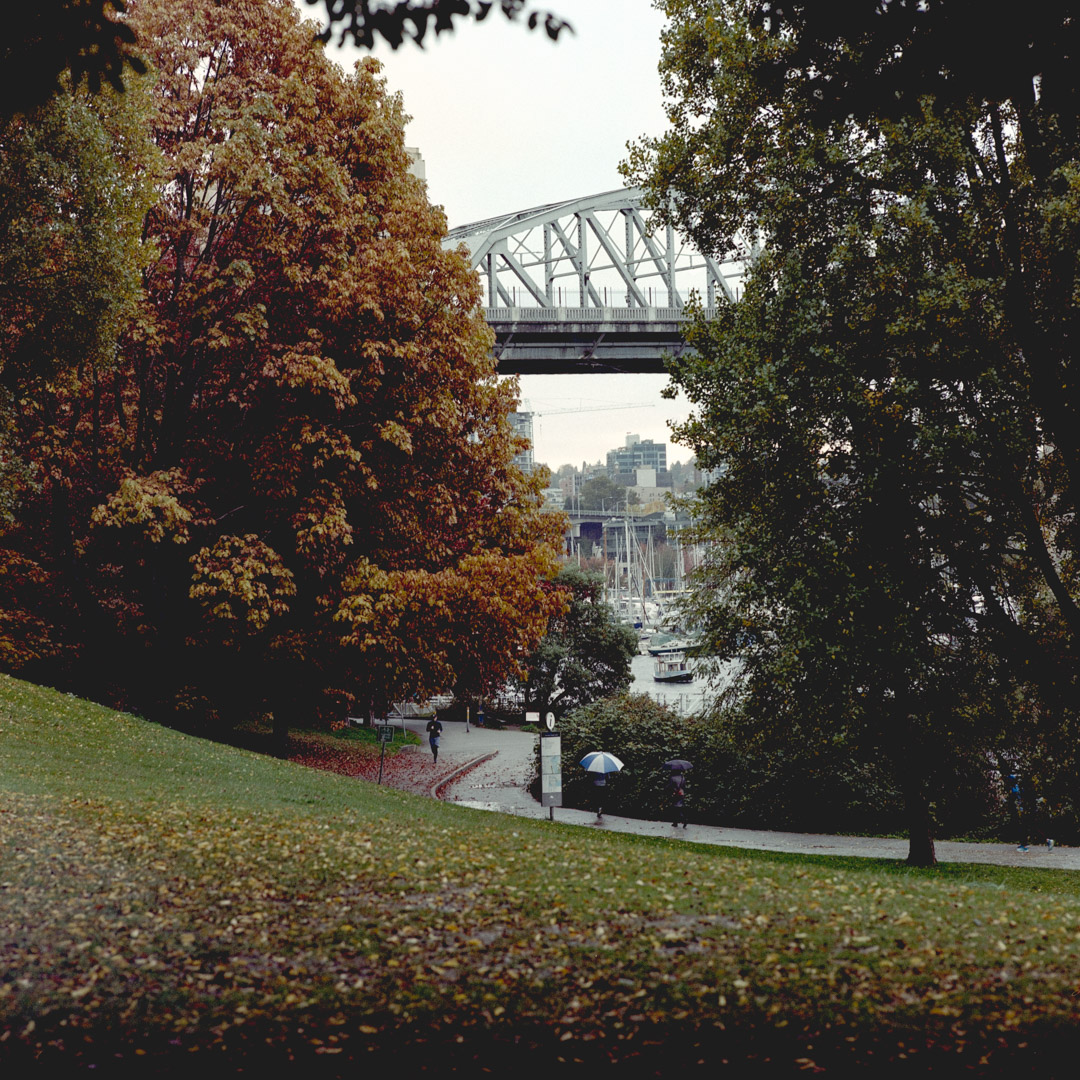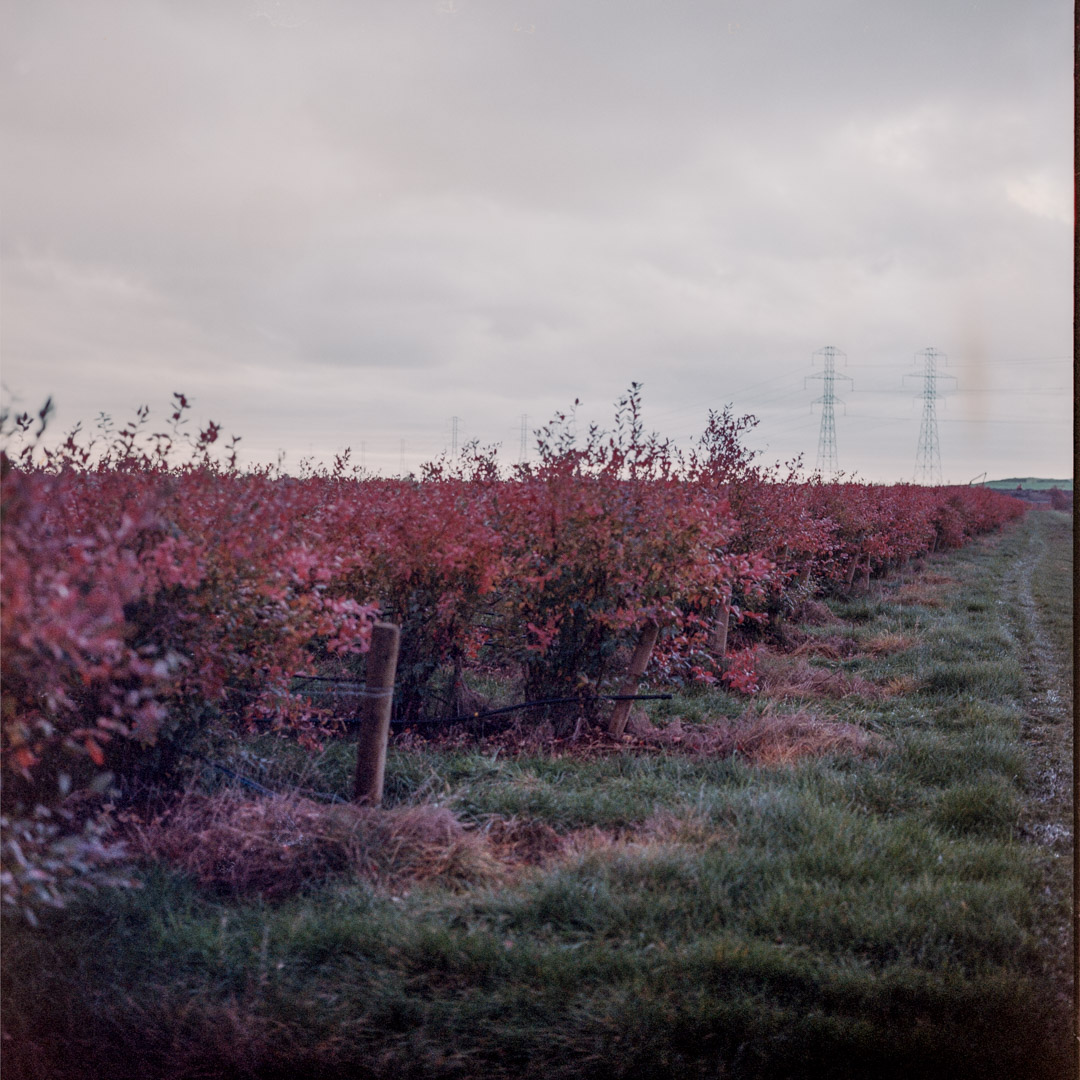Once you start developing color film on your own, it’s only natural to start breaking all the rules and mess up in every way possible. You’ll probably start by realizing that the temperature requirements are not as rigid as people say, and then very quickly move on to forgetting steps altogether.
Well, the only step you can forget about without completely ruining the film is the bleach (and technically, you can skip the fix in the short term, but you’ll have to go back and do that step eventually — even if the film gets exposed to light).
So first of all, what exactly is bleach bypass with color film?
Bleach bypass, or silver retention, is when you skip the bleaching step when developing color film. A bleach bypass results in images with higher contrast, lower saturation, and increased graininess. The technique was popularized in Hollywood, having been used in films like Fight Club and Saving Private Ryan.
Bleach bypasses are a fun way to experiment with color film. It’s possible to do with any color kit at home, though if you have blix (combination bleach and fix), you’ll need to use any standard B&W fixer on the film. Here’s everything you need to know about doing a bleach bypass at home.
What does the bleach do when developing color film?
There are usually three light-sensitive layers on color film. Each of those layers is sensitive to a certain wavelength of light and contains both silver halide and color dyes.
Silver halides are the backbone of film photography. These are the same light-sensitive crystals that make the images in all films — including black and white. But silver is opaque and doesn’t create a good color negative image. So film manufacturers include dye-forming crystals that make the images look far more appealing.
When the right wavelength of light hits the layer, it will excite the electrons in the silver halide to make them developable. Then, when you go to develop the film, the C41 developer couples the silver halide with the dye-forming crystal to release a small dye cloud into the layer.
Then, the bleach step removes the silver from the layer, leaving behind those dye clouds to form the image.
Bleaching the color negative results in a clearer image with brighter, more saturated colors. While bypassing the bleach step will result in the image being formed by both the silver and color dyes.
When should I bleach bypass my film?
Bleach bypass is a really cool effect, but it’s not right for every situation. The first step towards creating a good image with bleach bypass is to meter your images carefully and err on the side of overexposure if possible.
When you bleach bypass color film, you have to expect that the saturation will be reduced and that the bright areas of the image will pop off the background. That means it is very easy to overexpose a bleach bypass image.
Bleach bypass will look great in scenes that are highly saturated, but low-contrast. The best times to use this technique are when photographing people in places like lush forests, in the desert, or on a beach at sunset.
The bypass effect will simplify your film color palette, which makes it exceptionally useful when taking portraits in colorful places. The bypass effect will reduce the colors around your subject, making it easier for the audience to focus on them — especially if they are in the highlights.
When should I avoid using bleach bypass?
Bleach bypass should not be used at night or in high-contrast scenes like concerts or event photography. In these cases, it is really hard to control the light to create a good-looking image, so your likelihood of coming away with bangers is lower than when developing the film normally.
The next place to avoid bleach bypass is when photographing landscapes. Usually, you want to maintain as much of the dynamic range as possible when shooting landscapes. Bleach bypass reduces the dynamic range significantly and makes it hard to recover any detail in the shadow sections of an image.
Is bleach bypass reversible?
Many film photographers only shoot precious photos on film. I know of people who personally take a month or longer to finish a single roll. So if you’re one of those people, it makes sense to be a little bit hesitant about trying something that could completely ruin the outcome of your film.
The best thing about bleach bypass is that it is fully reversible. If the image just looks bad, you can always dunk your film in the bleach solution to remove the silver and make it into a normal color film negative. If you’re using a blix kit, you can dunk the film in the blix solution the same way you normally would.
Make sure to completely wash the film the same way you would after fixing. That means washing in running water for 3-5 minutes, or using the Ilford Washing Method to save water (learn more about that method, and other ways to reduce your environmental impact when developing film here).
Can I bleach bypass with a blix kit?
Most home film developing kits use blix, including the kits by Cinestill, Arista, Rollei, and Tetenal kits in both powder and liquid formats.
Blix is a single solution that combines both bleach and fix into a single solution. This saves home developers time and makes it so you only have to maintain three bottles of solution instead of four or five (depending on if the kit comes with a stop bath or not).
Most labs in the world keep a separate bleach and fix, because it gives better, more repeatable results, and theoretically makes it easier to do techniques like a bleach bypass when it is desired.
But if you have a blix kit at home, it is still possible to do a bleach bypass. All you will need is a regular fixer, like Kodak/Ilford Rapid Fixer, or Eco-Pro Neutral Fixer. Then, skip the blix, wash the film after the developing step, and place it into the fixer solution.
A regular, black and white film fixer will also fix color film because they use the same chemicals. All fixers contain Ammonium Thiosulfate to remove the remaining undeveloped silver halide crystals on the film — whether or not that’s color or black and white.
In the images above, I successfully performed a bleach bypass using a blix kit with Eco Pro Neutral fixer solution.
If you don’t want to buy a fixer that expires in six months, the next best solution is to look for the Flic Film C41 Kits, which are the only kits made for home development that separate out the bleach and fix. They’re available all over Canada and through some suppliers in the United States.
Will my lab do bleach bypass?
Some labs will do bleach bypass for you, but many will not.
Most cities have independent labs that will enjoy developing film in a boutique-style like this. However, since most of them standardize the way they develop film, using machines that take the film from start to end automatically.
So it may be difficult to find one willing to change their developing habits for a technique that isn’t in high demand. To find a lab that will bleach bypass, you may end up having to send the film off by post.
And if they are willing to do a bleach bypass, it is very unlikely that they would bleach the film for you later on down the road if you end up not liking the effect.
The best way to do a bleach bypass is to use the technique at home, where you’ll have full control over the process from start to end, as well as the ability to reverse it if you need to.
Final thoughts
I’ve experimented with bleach bypass for a few rolls now. I haven’t fully hit the mark where I’ve taken a photo that is perfected by bleach, but I’m continuing to use it as often as I can to learn more about when this technique works its best.
And that’s why I always recommend new film photographers to learn how to develop their film at home. Once you start doing it, you can experiment with techniques like this without having to rely on a specific lab that will undoubtedly charge you extra (and will definitely not bleach the film for you later if you don’t like the look). Developing color film is just as easy, (if not easier,) than black and white.
Techniques like this help you learn about film photography. And the fact that it’s reversible makes it great for any film photographer to try, no matter how long they’ve been developing film for.
Have you been wanting to do a bleach bypass on your film? Or have you done these in the past? Let me know your thoughts on bleach bypassing in the comments down below, or join me on Instagram!








